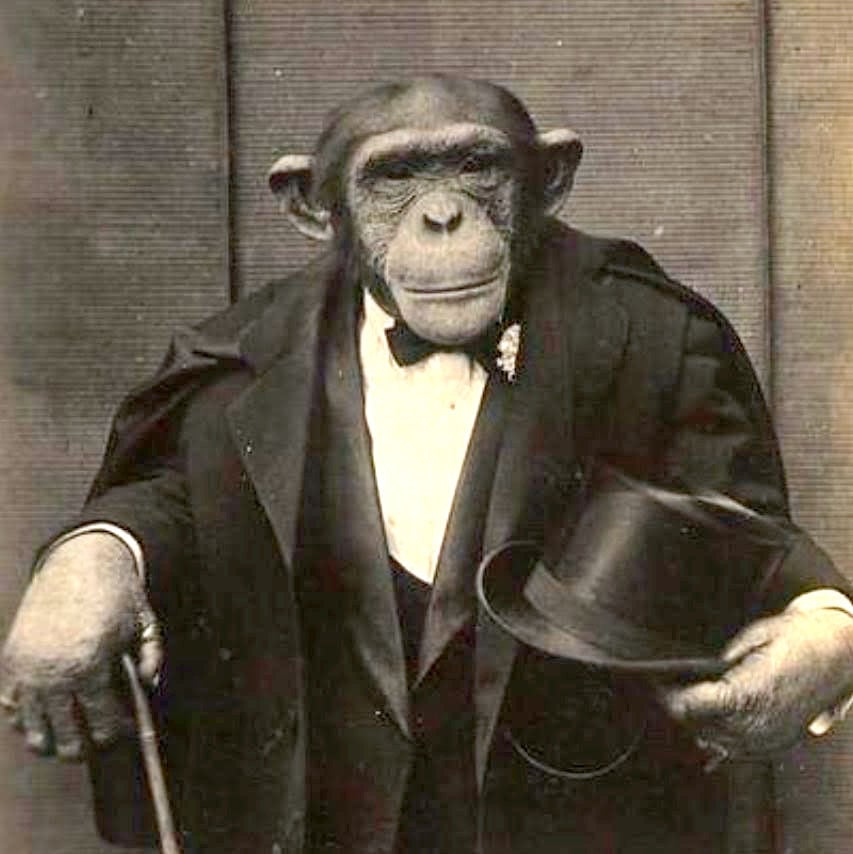Everyone here is hilarious thinking they’re immune to it.
Living in Canada, this shit never worked for me.
Our laws require that pretty much everything is taxed, some more than others, but taxed nonetheless. Despite this, our laws also allow for the tax to be excluded from the price listed for an item, so tax has always been an unpleasant surprise during checkout for me.
I’m sure many other Canadians can echo my sentiment.
The fact is, I’m always expecting to pay between 10 and 15% more on pretty much everything when I get to the checkout, so I tend to do math in my head to figure it out. Let’s just say that when I see $4.99, it’s easier for my brain to figure out 10 (or 13%, or 15%) of $5 than it is to figure out the tax on $4.99, so I err higher rather than lower on everything.
I see $4.99, I think $5 +tax and I figure that will set me back somewhere between $5.50 and $6 at checkout. Doing the math, the current HST tax in Ontario where I am, IIRC is 13%. 13% of $4.99 is $0.6487 (the company will round up to the nearest penny, so 65 cents), which is $5.64. going from $5 at 15% (which is what I’ll do in my head for simplicity), I’d estimate it’s $5.75 at checkout, and get pleasantly surprised when I save 11 cents because the tax was less than I anticipated.
All of this shit is kind of moot IMO, since I think people aren’t looking at prices nearly as much as they used to. When I was young, debit cards didn’t exist, credit cards were a tedious process of filing out paperwork, and so most of the time people carried cash. It was common for people to add up their costs as they went to ensure that the cash they brought would cover the items they’re buying at the grocery. For smaller transactions like convenience stores, you’d just do it in your head, and for big ticket purchases, like appliances, furniture, vehicles, etc, you’d use cheques or credit cards because the hassle of doing that was outweighed by the liability of carrying thousands of dollars to the store to buy a thing.
With debit/interac/whatever, and the chip/sign, or chip/pin process (and/or “tap” to pay), you have convenient, and instant access to your entire life savings on a whim with near zero effort or inconvenience. It’s never been so easy to spend money (especially money you don’t have - eg overdraft or credit cards).
When I started to do my own grocery shopping, sometime after debit/interac/chip&pin was made to be commonplace, I rarely looked at prices. I assumed the price was reasonable for what I was buying, and concerning myself with the nickels and dimes of it all was more effort than I cared to put into buying something I wanted or needed.
With the prices of everything going haywire in the last 5 years or so, I find myself looking at prices a lot more and going for alternatives to my “usual” brands of products simply due to price alone, especially when grocery shopping. If I can kick my grocery bill from $300 to $250 by simply buying smarter, that’s a cheap date I get to go on with my spouse that I otherwise couldn’t afford. That’s more valuable to me than buying name brand cereal or cans of Campbell’s soup over the store brand.
IMO, I’m the problem… or rather, my previous mentality was the problem that in part led to the crazy increase in pricing. I didn’t concern myself if something was a cheaper option and just bought whatever I wanted or whatever I was used to buying. I don’t have brand loyalty beyond “this was good/worked in the past, so I’ll buy it again”. That amount of “loyalty” doesn’t extend to significant increases in the price of things. The prices went up and while my grocery bill went up, I didn’t pay much attention to it. That’s just what it cost me. The cost always changed because I wouldn’t always buy the same things, nor the same quantity of things. So I expected it to be fairly random. That created a false loyalty to products that just kept going up in price. I kept paying that because I wasn’t paying attention. So they kept going up because the company didn’t see a drop in sales because of the increase in price.
Now, I’m much more conscious of what I’m buying. I’ll compare not only the cost, but the quantity of a thing. If I can get 700g of something at $5 but an alternative has 1000g for $6. I’ll get the $6 item, since I’m paying more, for a lot more, therefore I’m paying less per gram. I’ve become the kind of shopper that most companies can’t keep. If prices go up, I’ll jump to another brand that’s cheaper. If the quantity goes down (shrinkflation) I’ll go to a brand that gives me better value for my dollar.
I’m one step away from cutting coupons here. I’ll do it too.
At the end of the day, it’s all about economics for me. If it’s going to take me more time to compare, or find coupons, or whatever than I’m saving by doing that, then I won’t do it. Right now, cutting coupons falls below that value line. I put my time ahead of the proposed savings by cutting coupons. My time saved by not doing it, is simply more valuable to me right now. If/when that changes, I’ll start doing it.
Fuck corporations.
From my experience working in retail I’ve seen people say out loud something like “oh, it’s only 4 dollars!” When the sticker says $4.99. This shit apparently works on a lot of people for some reason.
This is my neighbor all the time.
Like dude, round up!
I think I’ve heard a couple people do this. One directly in response to me saying it was $5 lol.
I do that with gas, but everybody knows the .9 cents are implied.
Funny, I might be the only person I know who automatically rounds up gas prices…
Honestly I just want tax included on the price tag.
That is honestly insane.
In NZ the sticker price is what you pay, if the price on the sticker doesn’t include tax, it is false advertising and you pay what is on the sticker.
It is entirely up to the retailer to ensure that the price is correct. The only exception to this, is if the price is obviously wrong e.g. $5.00 rather than $500.
It really is considering how easy it would be to implement.
That’s an American problem too
I think it’s just so that pennies circulate
It is how it is, Americans are the dumbest
The amount of times I’ve watched Youtubers say something like “35 dollars” while showing an image that shows the price as $35.96 happens too often for me to side with OP lol, sorry.
To be fair, in that specific case, they could have been rounding to the nearest $5. Unlike virtually all other instances of that behavior.
Its literally how we see prices which is why companies do this
Worked in pricing for a big retailer, it 100% works and retailers don’t even like doing it, but it’s basically a necessity to get baseline sales. It’s WAY easier to have simple even number prices that calculate easily and get percent off sales and clearance prices that make sense. Really the only items you see it on are items competing with other retailers, so kraft mayo that every store has vs. A store brand soda you don’t care about volume on. The Mayo you better have $5.99 instead of $6.00 or it looks like you’re ripping them off. And even if they sell it got $4.99 it still keeps people thinking it’s a complex price difference rather than an even number they can compare more easily.
Also “
200100” is very different from “100”.People suck at math and this is how they confuse people into not caring what the actual price becomes when they have to add multiple items together.
What’s 19.99 + 21.75 + 4.99 + 3.99 + 1.99? Can the common person do that math in their head while grocery shopping? What about adding the tax to that total? Not a chance.
Most people probably don’t even know what the sales tax is in their own state.
your price tags show the price before tax? that’s fucked up
The major reason given is that taxes vary so much in the US by location that it would be onerous for businesses with locations in different areas to print different price tags and advertise prices broadly.
It’s even an issue online because, until you enter your address, the online retailer has no clue what your tax rate will be, and they have to assess tax based on the purchaser’s location. Postal code isn’t always enough, as they can be shared by different cities with different tax rates.
Some areas also vary tax by date (tax free holidays), though I don’t think consumers would care if their total ended up being cheaper than they thought.
A national standard VAT would be the only way businesses might start including tax in price, but there’s no way to do that without a constitutional amendment. States have the power to tax, and they’re not going to stop now even if they receive VAT revenues.
It’s bullshit because every location prints their own price tags lol.
And then calculates tax right at the register. They have everything they need to do it, it’d hurt their bottom line and be consumer friendly so they don’t.
In some countries like India they have GST (Goods & service tax) which is applicable all over India. It was implemented in 2017 and has unified the indirect tax system across the country. This means that the same tax is levied on goods and services irrespective of the state or territory in India. Most items have 18% GST and the price tag always shows tax included, which is convenient for buyers.
Most people dont just round up after seeing the price?
No. Most people round to the nearest whole number and often just pick a direction to round.
Since no one does math in their head anymore the total is always more than they expected. No calculators on shopping carts anymore either.
Most people round down. Their brain locks on to the 1 of 19.99, and approximates it to 10.00. We need to actively counter this to see it as 20.00. It’s a skill most people don’t apply all the time, and a number can’t even do.
Once you can do it reliably, it’s mind-boggling that others can’t, but it’s still a learnt skill, that needs to be applied.
Most of the people i saw round down notice that and then round up
It’s a subconscious thing. It’s how our brain is wired. It’s a bit like advertising. Most people don’t like ads. However, when confronted my 2 similar products, we will go with the familiar one. The source of that familiarity is irrelevant, ads make it familiar, just the same as using it, or a recommendation.
It’s possible to override both of these effects, but that requires a level of conscious effort. I can almost guarantee you’ve been caught by both at different times. You just didn’t notice (since noticing would allow you to correct).
Basically, $19.99 is in the category “under $20”. $20.00 is in “over $20”. Without conscious correction, you act on this.
Most people round down
Source?
Some slight ramdom paper reading, back in my uni days. Though I’ve ran across it via other sources over the years since. Unfortunately I don’t have any links to hand though.
It might better be described as people put numbers into categories. Most people have a 10-20 category. 19.99 fits. 20.00 gets bumped up to the next box. It’s a sub/semi conscious thing. If we use our higher thought process, we can deal with the numbers. That takes effort however, by default, we chunk. The price just abuses a common rollover point most people share.
So, no source do the actual research backing your claims?
Where is your thesis with references?
You do realise that it is a claim which needs to be proven, not the other way around, right?
No, most people just give up after seeing the price.
All the people i saw either rounded up or rounded down by mistake and then rounding up
This is one of those things that makes me feel the slightest bit more agitated and cynical towards people and society. We all know it’s manipulative, and that should be enough reason not to do it. So why does everyone who runs a business do it? Like yeah it does work, but is it really worth subtly eroding your own customer’s trust in you? There’s an invisible cost of goodwill here.
Are you choosing to go to the store that does $20 instead of $19.99?
Does that store exist?
It’s more that the customer refuses to buy the $20 item but at 19.99 it seems just a little more attainable.
That is a fair point. But then again, I don’t even remember the last time I was in a store that had honest prices.
I remember that for a time, JC Penney focused on honest pricing and abandoned common predatory prices. They came close to bankruptcy and went back to their old ways. The psychology of feeling like we got a good deal is so ingrained into most people that it becomes difficult to run a business without those things
But $999 is much lesser than a grand
My husband is awful in that regard. He sees the first digit only and then rounds it down. “It’s just 30€” - it’s 39,99€. “It’s like 200€” - it’s 289,90€, “5000€” - 5999€. I love him to pieces but I don’t trust any of his numbers.
0_0 I take it you do the lion’s share of the finances haha
At least I hope
I love him to pieces
How many? About 200?
Best I can do is 199
A whole 100 pieces? What a deal!
My dad is the same with gas price. If gas is 156.9 cents a litre? Nah to him it’s 156 cents a litre
But it IS how we see prices. If there weren’t science behind it, they wouldn’t be doing it.
The science is about how you initially react to the number. Your brain will see $19, and immediately you’ll think it’s $19. Only upon further inspection and processing through your cognition, you recognise that its $19.99, which is basically $20.
It’s that initial reaction they want, to grab your attention. Anyone who is going through life without leveraging their higher thinking will fall for this shit. Anyone who thinks, at all, won’t.
Unfortunately, there’s a nontrivial number of people who fall into that first category. People who were never taught to think. They just do.
A lot of marketing strategies are pseudoscience. Just like a lot police investigation practices or body language assumptions.
JC Penny kinda showed that no. It isn’t pseudocience
What’s the story about JC Penny?
The CEO decided that clients were smart intelligent people and treated people as adults. Aka, no discounts, no 99 pricing, it just costs what it costs, as low as we can make it, plus our margin.
JC Penny was already not too well, this helped sink them
It was less about the .99 pricing and more about “Sale” pricing and ‘coupons’. Retailers will put a pair of pants on “Sale” for 50% off 51 weeks out of the year and people think they’re getting a great deal whereas when it’s not half off, they just don’t buy.
Poor guy. Tried to do some good in the world and paid the price for it. Nobody ever went broke overestimating the stupidity of the average person.
“Why would I pay $25 for these pair of pants at full price when I could pay $24.99 for those [identical] pants that are half off?! Clearly, that’s the better deal!”
Hell, could probably even make it $29.99 for the identical pants and people will still go with that because they think they’re paying five more bucks and getting a $60 pair of pants
Some marketing strategies are pseudoscience, but this one isn’t.
Does anyone in the thread have actual info to back this up?
This doesn’t meet the bar you want, but my marketing professor called the .99 idea the single greatest thing to come out of marketing in a century.
Sounds about right.
Marketing hasn’t done anything positive for humanity. It is all just to manipulate people into buying shit they don’t need. It is the main driver for the overconsumption.
You should be able to find various tests and studies of this phenomenon on Google
So, it’s a “no” than?
It’s a yes but find it yourself
I was watching a PBS documentary about the first humans in the Americas. All the scientists are super cool until you get to the American anthropologist who starts using phrenology to explain why Native American tribes shouldn’t be given repatriation rights, only for a Danish geneticist to say “yeah, this is absolutely a Native American and i am willing to testify to that in any court of law”
Pseudoscience is still all the rage if it can be used to push a political agenda.
But it IS how we see prices.
I don’t. Never did. I’m sure I’m not the only one.
Same, I’ve always just rounded up. Even when it comes to things like .50¢ I still just round it up to the next dollar.
You do though
At some level you will favor the 19.99. You might justify it with some other rational but there will be the bias.
No, I really don’t.
No, I dont though.
It really depends on the study you choose to believe into. (No, everyone does it, isn’t a pro argument. People always had strange beliefs which later changed. I think it’s called major consensus narrative or maybe consensus reality
I like this hill, I’ll stay here. Thank you.)
dowsing for suckadrippas
I just wished it was mandated to list prices to include all the taxes along with it. Whether it says $19.99 or $20 still isn’t the actual price.
Recently had the worst of this. Was craving chocolate milk, find a nice size bottle of it for $3. Get to register. $6.63 total price because the glass bottle had over a $3 deposit.
I just wished it was mandated to list prices to include all the taxes along with it.
It is, in the EU.
Hey everything on steam is the listed price if ya live in California. We dont have a digital sales tax, which is weird.
Right? Of all the states California is the one with no tax? Even Texas has that shit.
If I had to guess its probably because the stste was kinda in a weird place when digital products were first becoming a thing so it was never implemented, and now nobody cares enough to try.
Then let’s stop talking about it 👀
Unfortunately taxes aren’t uniform across a metro area or even within a city.
Yeah, and? That doesn’t stop the individual stores from already calculating the taxes you’re going to pay at that location and putting that price on the labels on their own shelves.
Because when they advertise, those advertisements cover a larger area.
Then leave the advertisement alone. They still print the prices on tags at each store location.
Let them send out flyers saying item A is $20 *plus local taxes but when you get to the store the pricetag on the shelf should say $23.50 or whatever the markup ends up being at that location.
The owners of the legislature don’t want that, so it won’t get done.
The government doesn’t work for you, it works at the behest of those that have long since paid for the “elected” representatives.
Those people own companies that profit from all the misleading prices and adverts. They don’t have any interest in changing that.
I’d rather advisements list the highest price for the area they cover than have false advertising with the prices at the store.
















